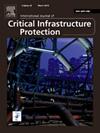Artificial immunity-based energy theft detection for advanced metering infrastructures
IF 5.3
3区 工程技术
Q1 COMPUTER SCIENCE, INFORMATION SYSTEMS
International Journal of Critical Infrastructure Protection
Pub Date : 2025-01-09
DOI:10.1016/j.ijcip.2025.100739
引用次数: 0
Abstract
Advanced Metering Infrastructure (AMI) is envisioned to enable smart energy management and consumption while ensuring the integrity of real energy consumption data. However, existing smart meters, gateways, and communication channels are usually weakly protected, often opening a huge door for data eavesdroppers who may be easily to further construct energy thefts. Although some energy theft detection schemes have already been reported in the literature, they often fail to take into account the dense data distribution characteristics of energy consumption data, resulting in compromised detection performance. To this end, we in this paper propose a novel arTificial IMmune based Energy theft Detection (TIMED) scheme, which can effectively identify five types of energy thefts. Specifically, we first develop an energy consumption data pre-processing method, which can effectively reduce the dimensionality of raw energy consumption data to facilitate the data analyzing efficiency. Second, we design a center-distance-based energy theft detector generation method to create high-quality detectors with low elimination rates. Last, we devise a nonself-based hole repair method for energy theft detectors, which can further reduce the false negative alarms. Extensive experiments on a real public AMI dataset demonstrate that the proposed TIMED scheme is highly effective in identifying pulse attacks, scaling attacks, ramping attacks, random attacks, and smooth-curve attacks. The results show that TIMED outperforms many existing machine learning and traditional artificial immunity-based energy theft detection methods.
基于人工免疫的先进计量基础设施能源盗窃检测
先进计量基础设施(AMI)旨在实现智能能源管理和消费,同时确保真实能源消耗数据的完整性。然而,现有的智能电表、网关和通信通道通常保护薄弱,往往为数据窃听者打开了巨大的大门,他们可能很容易进一步构建能源盗窃。虽然文献中已经报道了一些能源盗窃检测方案,但它们往往没有考虑到能耗数据的密集数据分布特征,导致检测性能下降。为此,本文提出了一种新的基于人工免疫的能量盗窃检测(TIMED)方案,该方案可以有效识别五种类型的能量盗窃。具体而言,我们首先开发了一种能耗数据预处理方法,该方法可以有效地降低原始能耗数据的维数,从而提高数据分析的效率。其次,我们设计了一种基于中心距离的能量盗窃探测器生成方法,以创建低淘汰率的高质量探测器。最后,我们设计了一种非自基的能量盗窃探测器孔洞修复方法,可以进一步减少误报。在真实公共AMI数据集上的大量实验表明,所提出的TIMED方案在识别脉冲攻击、缩放攻击、斜坡攻击、随机攻击和平滑曲线攻击方面具有很高的效率。结果表明,TIMED优于许多现有的机器学习和传统的基于人工免疫的能量盗窃检测方法。
本文章由计算机程序翻译,如有差异,请以英文原文为准。
求助全文
约1分钟内获得全文
求助全文
来源期刊

International Journal of Critical Infrastructure Protection
COMPUTER SCIENCE, INFORMATION SYSTEMS-ENGINEERING, MULTIDISCIPLINARY
CiteScore
8.90
自引率
5.60%
发文量
46
审稿时长
>12 weeks
期刊介绍:
The International Journal of Critical Infrastructure Protection (IJCIP) was launched in 2008, with the primary aim of publishing scholarly papers of the highest quality in all areas of critical infrastructure protection. Of particular interest are articles that weave science, technology, law and policy to craft sophisticated yet practical solutions for securing assets in the various critical infrastructure sectors. These critical infrastructure sectors include: information technology, telecommunications, energy, banking and finance, transportation systems, chemicals, critical manufacturing, agriculture and food, defense industrial base, public health and health care, national monuments and icons, drinking water and water treatment systems, commercial facilities, dams, emergency services, nuclear reactors, materials and waste, postal and shipping, and government facilities. Protecting and ensuring the continuity of operation of critical infrastructure assets are vital to national security, public health and safety, economic vitality, and societal wellbeing.
The scope of the journal includes, but is not limited to:
1. Analysis of security challenges that are unique or common to the various infrastructure sectors.
2. Identification of core security principles and techniques that can be applied to critical infrastructure protection.
3. Elucidation of the dependencies and interdependencies existing between infrastructure sectors and techniques for mitigating the devastating effects of cascading failures.
4. Creation of sophisticated, yet practical, solutions, for critical infrastructure protection that involve mathematical, scientific and engineering techniques, economic and social science methods, and/or legal and public policy constructs.
 求助内容:
求助内容: 应助结果提醒方式:
应助结果提醒方式:


